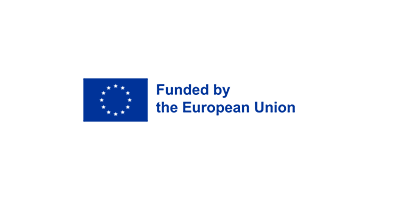GUARDIANS
Digital solutions for small- and medium sized farms
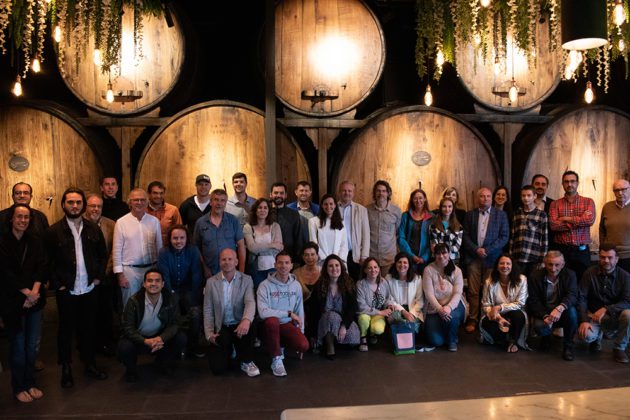
The new EU project GUARDIANS aims to strengthen the competitiveness of small and medium-sized farms using relevant digital technologies. The project will test innovative digital technologies through pilot projects with small and medium-sized farms in Sweden, Italy, Spain and the Czech Republic. The test farms have various productions from feed and meat to honey and fruit.
Start
01. Mar 2023
End
28. Feb 2027
Funded by
Horizon Europe
Project Manager(s):
Other Participants:
Watch film about GUARDIANS
GUARDIANS empowers small- and medium-sized farms through smart solutions, bridging the technological gap with larger food producers.
Watch a presentation film about the EU-project.
Background
It can be challenging for small and medium-sized businesses to adopt new technologies. It is therefore wanted that also the small and medium-sized agricultural units in Europe should become robust and productive through new technology like for the larger enterprises.
Goal
The new EU project GUARDIANS aims to strengthen the competitiveness of small and medium-sized farms using relevant digital technologies. A methodological framework for better interaction between actors will stimulate the smaller food producers to adopt and co-create new innovative digital technologies.
The project introduces nine digital, innovative solutions grouped into three categories:
- SMART (smart agriculture),
- CAP (problem solving for a coordinated agricultural policy) and
- ENV (environmental valorization).
This will be tested in Spain, Italy, Sweden and the Czech Republic with pilots on 22 small and medium-sized farms. Subsequently, nearly 100 farms will participate in an implementation phase of the project’s final products.
GUARDIANS’ digital innovative solutions will help SMEs close the technological gap towards large agricultural entities. In this way, the small players will also be able to produce food with lower emissions, become more sustainable and improve their competitive position in the future.
An interdisciplinary collaboration methodology with new strategies for increased application will be tested using the nine different technologies. Here, the project will test and further develop both hardware and software that are part of various drone projects in air and on the ground, different sensors and new monitoring strategies adapted to the needs of smaller food producers.
Targets
- Deliver a customized set of digital, innovative solutions.
- Demonstrate an interdisciplinary framework for co-creation.
- Define strategies for more sustainable, productive management models for manufacturers, focusing on the implementation of environmentally friendly methods and new digital solutions.
- Implement the concept of “everything in one place”.
- Use new certificates to document the environmental and social impacts of food production in agriculture.
- Promote new appropriation mechanisms.
What we do
Project partners will co-create to design activities that help technology providers develop customized tools for small and medium-sized farms. It will be studied how these tools can provide consumers with affordable, healthy and more sustainable foods in the future.In addition, it will be look at how a form of reverse innovation can develop technology with lower costs among small-scale producers, which in turn could reduce costs for the larger players.
In the food system, a gap may arise between the three different knowledge bases of tacit tangibly (1), explicit scientific (2) and aesthetic symbolic (3).
In food production, and especially in agriculture, much of the knowledge is tangible experience-based and can be called “tacit knowledge”. Tacit knowledge is embodied and is difficult to write down.
Science-based explicit knowledge is represented in the project through the R&D suppliers while the symbolic knowledge, which often can be visual marketing services, is represented through the more creative consulting partners.
The translation of these three forms of knowledge can take place through various technology providers who are strongly represented in the project and can be placed in the middle of the triangle.
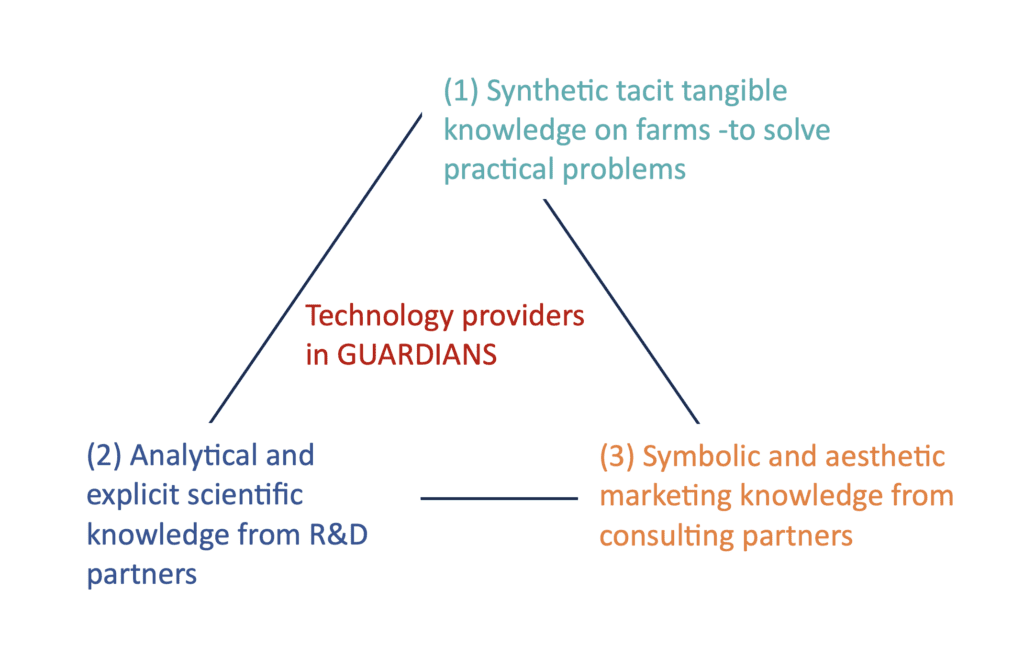
Nofima will monitor and measure how this technology plays out in practice. The assessment method draws inspiration from the Unified Theory of Acceptance and Use of Technology (UTAUT). Intention and use shall be measured on the basis of expected results and expected efforts, social impact and facilitation.
Nofima will lead the work to map the extent to which farmers make use of new technological solutions. The collaboration between technology suppliers, food manufacturers, distributors, wholesalers and consumers will be mapped. Data will be collected from technology suppliers, farmers, distributors, wholesalers and consumers. Data from interviews and surveys will form the background for deliverables in the project from Nofima’s side.
Facts about the project
GUARDIANS is a four-year project with 22 partners from nine European countries.
The project is funded with EUR 5 million through Horizon Europe and is led by CTIC Technology in Spain.
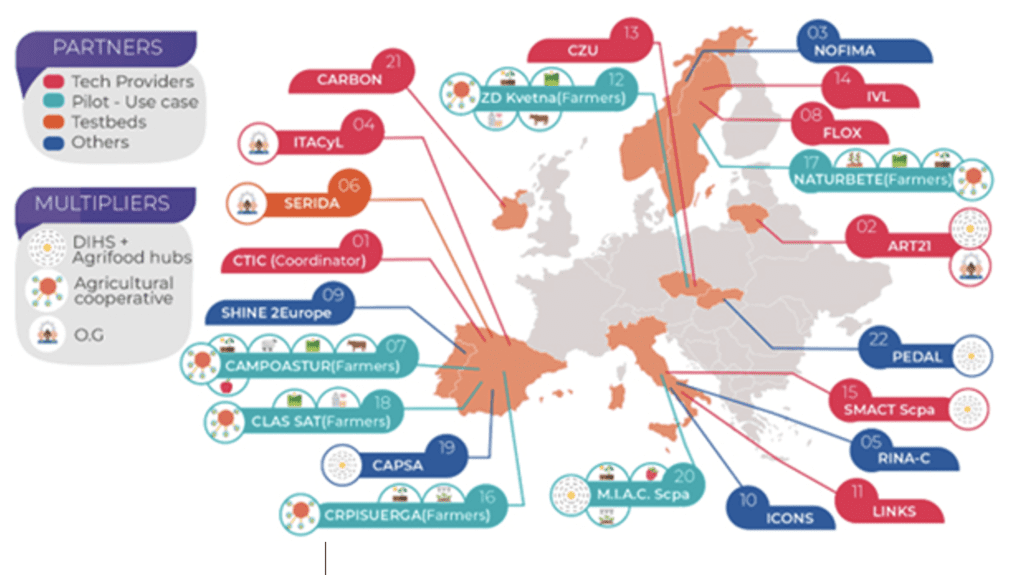
Partners
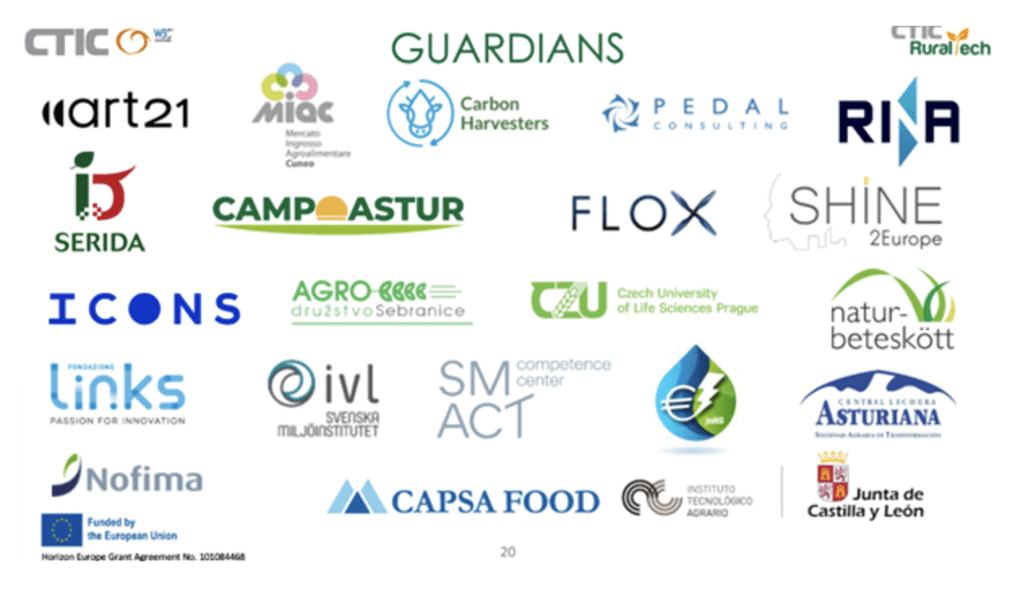
Press release
Publications
